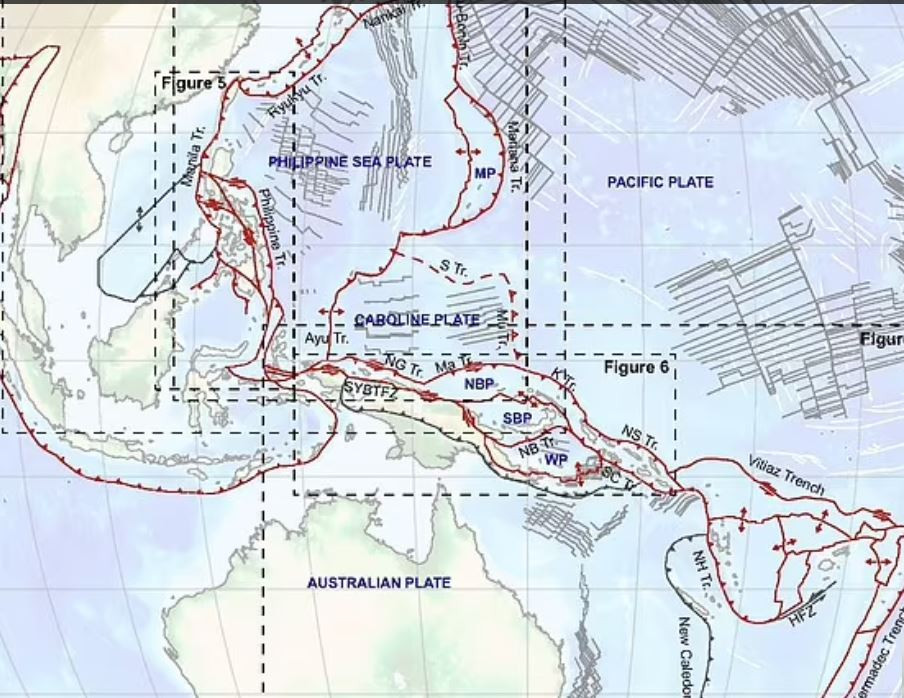The “mega-plate” was once 15 million square miles, about a quarter the size of the Pacific Ocean today.
Scientists have located a tectonic plate lost for thousands of years in the western Pacific Ocean.
It’s called Pontos.
The “mega-plate” was once 15 million square miles, about a quarter the size of the Pacific Ocean today.
Over the years, it began to recede and was lost for millions of years, having collapsed under a neighboring plate due to gravity.
The Pontus already existed 160 million years ago and only existed 20 million years ago, although during that time its size had probably shrunk considerably.
The researchers used computer models and studied ocean rocks, described as “relics of the Pontus”, to identify the plate and its movement.
The findings were detailed in a new study led by Suzanna Van de Lagemaat, a PhD candidate in plate tectonics at Utrecht University in the Netherlands.
“There are many plates that were once on the surface of the Earth that no longer exist,” he told the Daily Mail.
“In my model, which dates back to 160 million years ago, the Pontus has been around since then, but it may be older. It finally disappeared about 20 million years ago, so it was on Earth’s surface for at least 140 million years, but probably longer ».
It is known that the Earth’s lithosphere – its rocky, outer shell – is today made up of about 15 tectonic plates, each of different shapes and sizes.
Strong seismic activity can be detected along tectonic plate boundaries.
Tectonic plates rub against each other, causing earthquakes but in the ancient geological past, large plates have since disappeared into the Earth’s mantle through subduction.
This is the geological process in which the edge of one lithospheric plate is pushed under the edge of another – and over time an entire plate can be lost.
Most importantly, the disappearing plate leaves behind traces when it “sinks” into the Earth’s mantle – namely, rock fragments hidden in mountain belts.
“It’s an ongoing process,” Van de Lagemaat said.
“The subducting plate is actually denser than the surrounding mantle, so gravity pulls the plate down into the mantle.
“During the dipping process, however, the upper parts of the slab are sometimes scraped off – a process that, believe it or not, is reminiscent of a cheese grater cutting off only a very small slice.”
For the study, Van de Lagemaat and her colleagues looked at Earth’s most complex plate tectonic region – the area around the Philippines.
This is described as a “complex junction” of different plate systems where many of their boundaries meet.
“The area consists almost entirely of oceanic crust, but some pieces are raised above sea level and show rocks of very different ages,” Van de Lagemaat said.
The team used geological data to reconstruct the movements of today’s plates with computer modelling, which indicates a wide area potentially being emptied by a subducting plate.
Source :Skai
I am Terrance Carlson, author at News Bulletin 247. I mostly cover technology news and I have been working in this field for a long time. I have a lot of experience and I am highly knowledgeable in this area. I am a very reliable source of information and I always make sure to provide accurate news to my readers.











